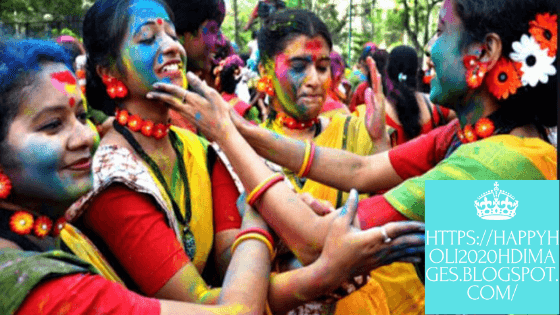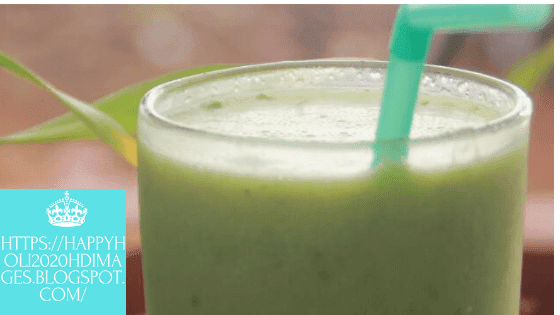Indian culture is known for its extravagance of convention and its profound roots in folklore. Our celebrations are a method for the articulation of our legacy, one of the most eminent being Holi.
This celebration of Color pulls in heaps of visitors from everywhere throughout the world because of sensational uniqueness. The Indian sub-landmass turns into the focal point of fascination for this single celebration. A portion of the customs and less-realized enjoyment realities are amazingly odd as well however they are a piece of what characterizes Incredible India,"Atualay Bharath".
Here are 10 Interesting fun facts about Holi across India.
1. Thandai or Bhang
Holi cannot be envisioned without Consumption of thandai which a formula comprising of sweet milk-based beverages with bhang as the essential fixing.
Thandai has been a piece of old conventional Holi festivities across India. Bhang or Cannabis is essentially an intoxicant yet when blended in with milk, ground dry products of the soil have their own extraordinary and one of a kind flavor. While utilization of bhang is illicit in India now, for this Festival law authorization wants to choose to disregard such events in view of the strict criticalness of the utilization.
Bhang as per the Indian folklore it considered as prasad of Lord Shiva the Destroyer and experimentally expected to have recuperating powers.
2.Jaipur 's Elephant Festival
India's pink city Jaipur, which has a long history of Royal Family and fortifications commends the event of Holi with trademark pageantry and style. The joyful making that is a piece of the custom here incorporates what is known as the Elephant Festival, making the merriments genuinely remarkable. All things considered, what could be more uncommon than marches, excellence challenges, and back-and-forth struggles, with elephants as the primary members!
3. Pakka Colors
Old Indian culture and strict customs have consistently had a profound association with mother earth and underline congruity with nature, so hues have customarily been made utilizing common colors and herbs. The utilization of pakka hues that contain dangerous synthetic compounds, oil, and even shards of glass would thusly make the people of old bristle with frustration! Today, hues sold for Holi are presently frequently made with unsafe synthetic concoctions like chromium, silica, lead, and metal oxides that can even reason disease.4. Holi with Ashes
Everybody realizes that Varanasi is one of the most vivid urban communities on the planet on the event of Holi, yet most are uninformed of the old custom that is as yet rehearsed here. After clerics and fans offer bhang, ganja (cannabis), organic products, and blossoms to the divinity they take an interest in a custom that may stun outcasts. Individuals use debris from incineration fires, tossing it at one another and spreading it on one another's countenances. The remains are likewise frequently blended in with Gulal to add some shading to the debris. As horrifying as the convention may appear, it is really demonstrative of the nearby culture, where demise isn't something to be dreaded, however, is a way to moksha or salvation.5 Lathmar Holi
Lattmar Holi, as the celebrations are called, in Barsana, is one of the most bizarre merry customs in the nation. In an inversion of fortunes, men are in a bad way in the customs held here, where the ladies people from the town beat the men with tremendous sticks, called Latth. The men frequently whistle and bother the ladies to stand out enough to be noticed, after which they are compelled to protect themselves with shields made of wood and leather.
6. Holika Dahan
7. Basanta Utsav

Basanta Utsav is a custom of Holi festivities that can be seen in certain pieces of Bengal. The underlying foundations of this custom are moderately present day, yet notable, having been presented by India's incredible Nobel laureate writer Rabindranath Tagore. The celebrations here are not so strange, however, they are no less uncommon as a result of the nonattendance of riotous cheerfulness. The refined festivals are generally unmistakable at Shantiniketan and are described with hues, yet with social projects that incorporate melody, move, and the reciting of psalms.
8. Rain Dance

With regards to Holi, the notice of a downpour move doesn't allude to any old profound custom, for example, the ceremonial moves of Native Americans and other innate social orders to coax the rainstorm. Rather, it alludes to an advanced wonder that has come to speak to the festivals in India's metros. For some, Holi is as a lot of a celebration of water, all things considered of shading, and this nurturing component is thus particularly a piece of the merriments. Gatherings with downpour moves have now become a gigantic business undertaking in the urban areas and allow individuals to get together, move, soak each other in water and hues, and have a ton of fun time. Tragically, with the commercialization of the celebration, the genuine quintessence of festivities is regularly lost.
9. Hola Mohalla
 In the same way as other celebrations in the West that have Christian beginnings, the Hindu celebration of Holi has additionally assumed a multicultural personality and is praised by every last one. This custom of multiculturalism is in reality so natural for India that Holi was received and adjusted to adherents of Sikhism during the 1700s. The tenth Sikh Guru Gobind Singh accepted that the celebration ought to be utilized to feature the military aptitudes of the network. From that point forward Hola Mohalla, as it is called, is commended with accomplishments of physical perseverance, including combative techniques shows, wrestling, mock sword-battles, and parcels more.
In the same way as other celebrations in the West that have Christian beginnings, the Hindu celebration of Holi has additionally assumed a multicultural personality and is praised by every last one. This custom of multiculturalism is in reality so natural for India that Holi was received and adjusted to adherents of Sikhism during the 1700s. The tenth Sikh Guru Gobind Singh accepted that the celebration ought to be utilized to feature the military aptitudes of the network. From that point forward Hola Mohalla, as it is called, is commended with accomplishments of physical perseverance, including combative techniques shows, wrestling, mock sword-battles, and parcels more.10 Gods Idols on Swings
In certain pieces of Bengal, the celebration is likewise called Dol Yatra due to a curious custom related with the merriments. As a feature of the festivals, the icons of Lord Krishna and Radha are marched in the wake of being put on swings, with aficionados shaking for an opportunity to swing them. The men additionally toss a powder, known as 'abeer' and shaded water, while the ladies sing strict melodies and move around the swings.






nice post
ReplyDeletePost a Comment